Originally published in AutoWeek, August 7, 1989
If longevity has anything to say about virtue, as it does with, say, the VW Beetle or Citroen 2CV, then the De Tomaso Pantera is pure as the Vestal Virgin’s dormitory and more correct than a spelling bee champion. Few cars first sold in 1971 are still marketed today somewhere in the world. Those few that are – excluding People’s cars they continue out of sheer socialist desperation – hold certain virtues that justify their current production. What is it for the Pantera?
Well take Tom Tjaarda design. It’s a classy combination of curves and creases that, despite being penned 20 years ago, could be passed as brand-new today.
Performance is like a lighted fuse meeting the charge of a Roman candle on the Fourth of July. I’ve never ridden a solid-fuel rocket and likely never have you, but this V8 thundering in the small of your back – this must be what it’s like.
And the Pantera still goes around corners. And if modern econobombs will pull more than the originals less-than .8 g, well, let’s see what they can do on circa-1971 tires.
Still, it’s somewhat amazing that the Pantera was ever built. Ford Motor Company launched it into a rising gale that would leave automotive performance in tatters, but the horizon was much brighter in 1970 when Ford bought about 20 percent of De Tomaso Automobili. The Pantera had begun as a De Tomaso project, a replacement for the Mangusta. Ford’s interest, largely that of one Lee Iacocca, then newly president of FoMoCo, change that, and before long the Pantera was debuting at the 1970 New York Auto Show.
The Pantera did not hit the showrooms, of course, until 1971. Magazine ads showed, however, a brilliant yellow Pantera in patently classic surroundings and carried price as a headline: “Around $10,000.”
Astonishing, an affordable exotic. Expensive, sure. More than the average college graduates first-year salary, but it was, as a 1973 road test pointed out, only 40 percent of the cost of a Maserati Bora. And the Ford 351 Cleveland, while lacking a pedigree, meant that you could get points in Peoria and a water pump in Waterloo, Iowa. That takes care of the engine, but the other aspects of the car (exhaust system, sheet-metal, suspension, etc.) were another matter entirely – owners often told of up to three-month waiting periods for a rear quarter panel, for example.
The Pantera’s engine was, of course, in the middle, like any respectable race car. The styling was stunning, light and well-balanced and seemingly without a bad angle. Inside were bucket seats (never mind that they’d prove to be less than comfortable), a gated shift lever like you-know-who’s, and gauges and controls on the center console (which took a driver’s eyes from the road, but boy did it look neat!). And it sported Campagnolo alloy mag wheels.
Lincoln-Mercury got the nod for handling the Pantera, supposedly because (a) the price of was closer to that of a Lincoln than a Ford, and (b) Lincoln-Mercury, after Ford dropped the Cortina, was the company’s “import division,” also selling the Capri. Besides, the Pantera could also attract customers who could be switched into a Lincoln. While the first reason might be specious, the Pantera may well have sold a few Capris and Lincolns.
It finally went on sale in 1971. Although headroom was much improved over the Mangusta, driving position was still skewed by offset pedals and steering wheel. Handling was called spooky, with initial understeer switching to violent oversteer, though a huge improvement over the Mangusta. Everyone loved the power, was sub-15 second quarter miles despite the balky shifter and first to the left and back (like a race car!).
Though the ‘71 Pantera had dainty bumperettes under each headlight which would never pass the new bumper law of 1973. Fortunately, Tjaarda was able to style an acceptable, black-rubber basher. The new bumpers added about 50 pounds, but considering the chromed railroad ties that went on the other ‘73 Ford products, well, it was very lucky.
Ford and De Tomaso strove to make continuing detail improvements, not the least of which were moving the fuel filler outside (from under the engine cover and over the exhaust manifold) and a thermostatically-controlled switch for the electric radiator fans (not as macho as a manual switch, but more practical), as well as many lesser changes.
The radial tires of early Panteras had been blamed for the cars twitchy under/oversteer problems, so Ford worked with Goodyear to develop bias-belted tires thought to be less prone to sudden breakaway. The result was the nylon-belted Arriva, with C60-15’s up front, H60-15s in the rear.
The 1974 Pantera of Paul Gentile of Columbia, Md., has the black bumper and even the original Arrivas. The Arrivas may have solved the quirky cornering – Paul’s Pantera proved positively pitchable – I found I could break the front or rear loose at will – but in a straight line… well, there wasn’t one. Pavement imperfections diverted the Pantera from the chosen path. And even with a relatively light front end, no power steering meant contingent continuously muscling the car back in line.
Gentile’s Pantera proved true to form elsewhere, as well. The interior is vinyl, the shifter really wanted to grow up to be a rowing machine and the seats look like must Mustang refugees. There is limited stowage room behind the seats and suitcase room is minimal, but unlike the Mangusta the windshield rake won’t make you leave your frontal lobes at home. Nor, as with the Mangusta, do you need to fear grounding, the ZF transaxle having been imported for additional clearance. Engine noise is wonderful and ever-present.
Ford, however, found conditions barely tolerable in 1974 and was struggling through governmental hoops to sell its bread-and-butter cars, much less specially cars like the Pantera. Additionally, Ford was faced with a total redesign of the Pantera to meet safety and emissions requirements. Thus, as planned from the beginning, the Pantera died in 1974 – there would be no production 1975 US-spec Pantera. De Tomaso, already with European marketing rights, bought the 200-some Panteras is in process and continued production at about 25 cars per year. The meek may inherit the earth, but De Tomaso got the Pantera.




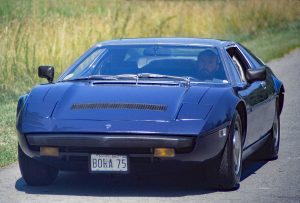
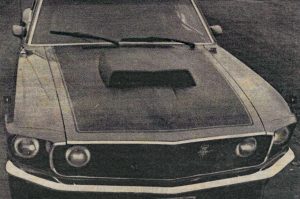
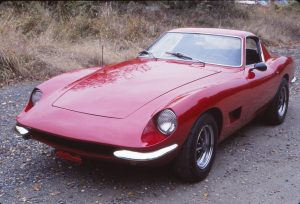

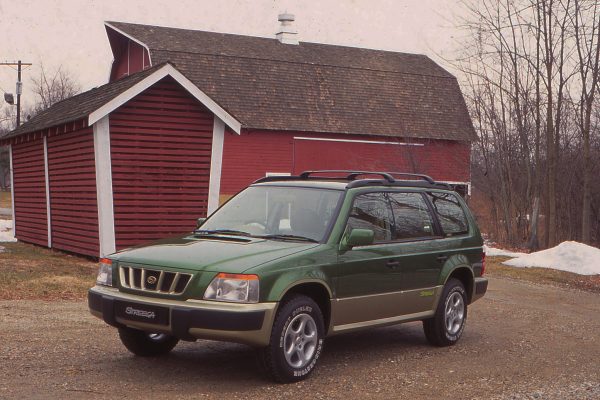
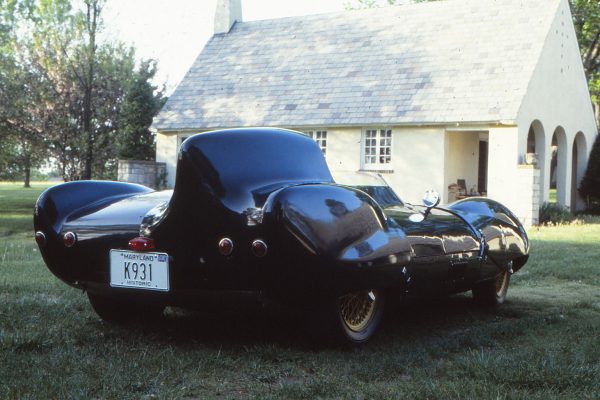

What Do You Think?
You must be logged in to post a comment.